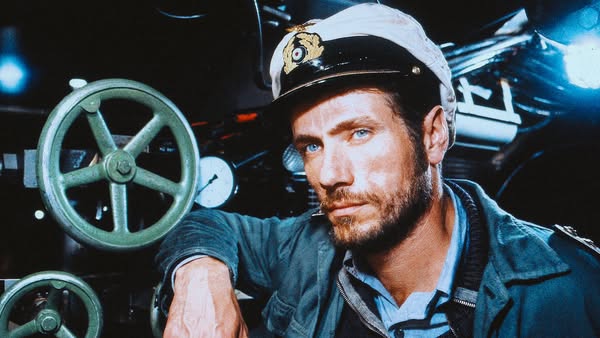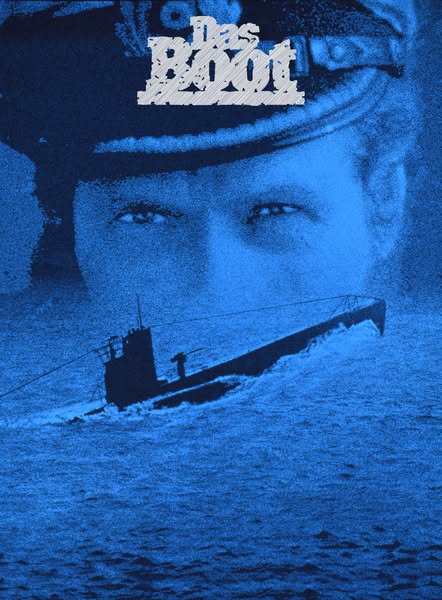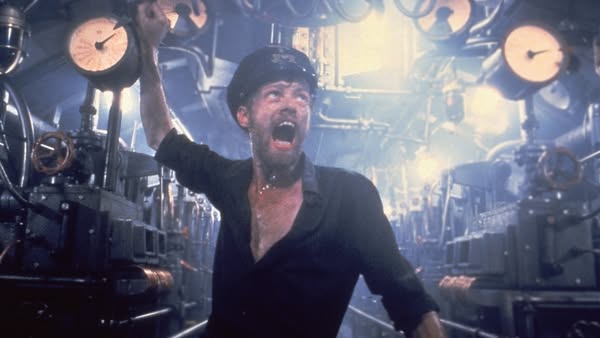Das Boot (1981)

Das Boot is a 1981 German war film that has achieved critical acclaim for its intense and immersive portrayal of life aboard a German U-boat during World War II. Directed by Wolfgang Petersen, the film is based on the novel by Lothar-Günther Buchheim and is often regarded as one of the greatest war films ever made. It presents a gripping narrative that not only focuses on the harrowing experiences of the crew but also delves into the psychological strains of warfare, making it a profound exploration of the human condition in times of conflict.
Set in the early 1940s, the film follows the crew of U-96, a German submarine, as they embark on a perilous mission in the Atlantic Ocean. The story is told through the eyes of a war correspondent, played by Jurgen Prochnow, who joins the crew to document their journey. From the outset, the film immerses viewers in the claustrophobic and tense environment of the submarine, where the crew faces the constant threat of enemy ships and depth charges. The cinematography brilliantly captures the darkness and confinement of the U-boat, enhancing the sense of dread and uncertainty that permeates the narrative.

The film’s structure is marked by a stark realism that contrasts the glorification often associated with war films. As the crew navigates their dangerous mission, they grapple with fear, camaraderie, and the brutal realities of combat. The dynamic among the crew members is central to the film, showcasing their relationships, conflicts, and shared experiences. The portrayal of these characters is nuanced and complex, allowing viewers to connect with their struggles and aspirations. Each member of the crew represents a different facet of human emotion, from bravery and loyalty to despair and resignation.
Das Boot stands out for its meticulous attention to detail, both in terms of historical accuracy and its depiction of life in a submarine. The film’s production design creates an authentic atmosphere, with the cramped quarters of the U-boat serving as a microcosm of the larger war. The sound design is particularly noteworthy; the creaking of the submarine, the sounds of machinery, and the silence before an attack all contribute to the film’s immersive experience. The tension is palpable as the crew must remain vigilant and ready for any signs of danger, constantly aware that their lives depend on their ability to work together under extreme pressure.

The film also raises profound moral questions about war and its consequences. Through the experiences of the crew, it examines the futility of war and the psychological toll it takes on those involved. As the mission progresses, the crew faces moments of doubt and despair, forcing them to confront the meaning of their actions and the realities of their situation. This introspective approach sets Das Boot apart from more conventional war films, which often focus on action and heroism.
Wolfgang Petersen’s direction is masterful, balancing tension with moments of quiet reflection. The pacing of the film allows viewers to experience the slow, agonizing wait for battle as well as the chaos of combat, creating a dynamic viewing experience. The performances of the ensemble cast are compelling, with Jurgen Prochnow’s portrayal of the captain standing out as a highlight. His character embodies the weight of leadership and the burden of responsibility, navigating the challenges of war while trying to maintain the morale of his crew.

Overall, Das Boot is a cinematic achievement that offers a haunting and realistic portrayal of life in a U-boat during World War II. Its exploration of camaraderie, fear, and the psychological impact of war resonates deeply, making it not just a war film, but a profound commentary on the human experience in the face of adversity. With its gripping narrative, exceptional production values, and powerful performances, Das Boot remains a timeless classic that continues to captivate audiences and provoke thought on the nature of war and humanity.











